Common Lipidomics Databases and Software
Lipidomics, a subset of metabolomics, is the large-scale study of lipids—their structures, functions, interactions, and distribution within biological systems. Lipids play critical roles as structural components of cell membranes, energy storage molecules, and signaling agents. With advancements in analytical technologies like mass spectrometry (MS), lipidomics has become indispensable in biomedical research, including disease diagnostics, metabolic studies, and drug development.
To navigate this field, researchers rely on lipidomics databases and software. Databases serve as repositories for lipid data, while software tools process, identify, and analyze this data. Whether you’re a beginner seeking foundational knowledge or an expert looking for advanced tools, this guide provides a detailed overview of common lipidomics databases and software, their applications, and how to choose the right ones for your needs. As of April 2, 2025, this guide reflects the latest resources and trends in the field.
Understanding Lipidomics: The Basics
Lipids are a diverse class of organic compounds, including fatty acids, glycerolipids, phospholipids, and sterols. Lipidomics aims to comprehensively profile these molecules to understand their roles in health and disease. Techniques like liquid chromatography-mass spectrometry (LC-MS) and shotgun lipidomics generate vast datasets, necessitating robust tools for storage and analysis.
For beginners, lipidomics might seem daunting due to its technical complexity. However, databases simplify access to lipid classifications (e.g., the eight categories defined by LIPID MAPS: fatty acyls, glycerolipids, etc.), while software automates tasks like peak detection and lipid identification. Experts, meanwhile, leverage these tools for deeper insights, such as pathway analysis or integration with multi-omics data. This guide bridges the gap between novice and advanced users by covering both foundational and technical aspects.
Common Lipidomics Databases
Lipidomics databases store detailed information about lipid structures, functions, and metabolic pathways. They vary in scope, accessibility, and integration with analytical tools. Below are some of the most widely used databases:
1. LIPID MAPS (Lipid Metabolites and Pathways Strategy)
-
Overview: Initiated by the National Institutes of Health (NIH), LIPID MAPS is the gold standard in lipidomics, cataloging over 40,000 unique lipid compounds. It uses a systematic classification system dividing lipids into eight categories.
-
Features: Offers tools like mass spectrometry prediction, structure drawing, and statistical analysis modules. It also provides tutorials and webinars for beginners.
-
Best For: Researchers needing a comprehensive, well-maintained resource with integration capabilities.
-
URL: www.lipidmaps.org
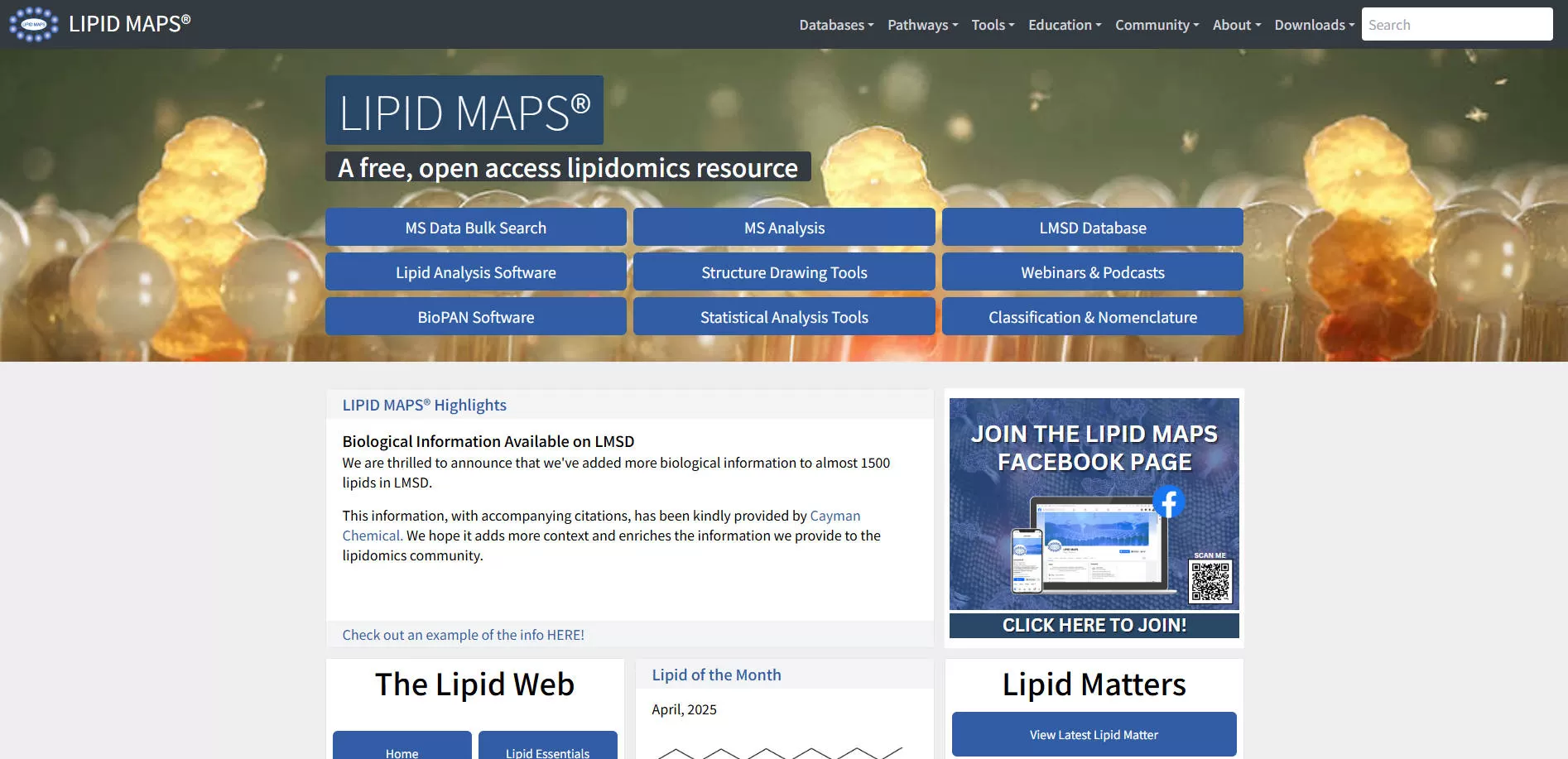
2. SwissLipids
-
Overview: A knowledgebase focused on lipid classification and annotation, SwissLipids links lipid structures to biological pathways and ontologies.
-
Features: Includes detailed structural data and cross-references to other databases like UniProt.
-
Best For: Studies requiring precise lipid annotation and functional analysis.
-
URL: www.swisslipids.org
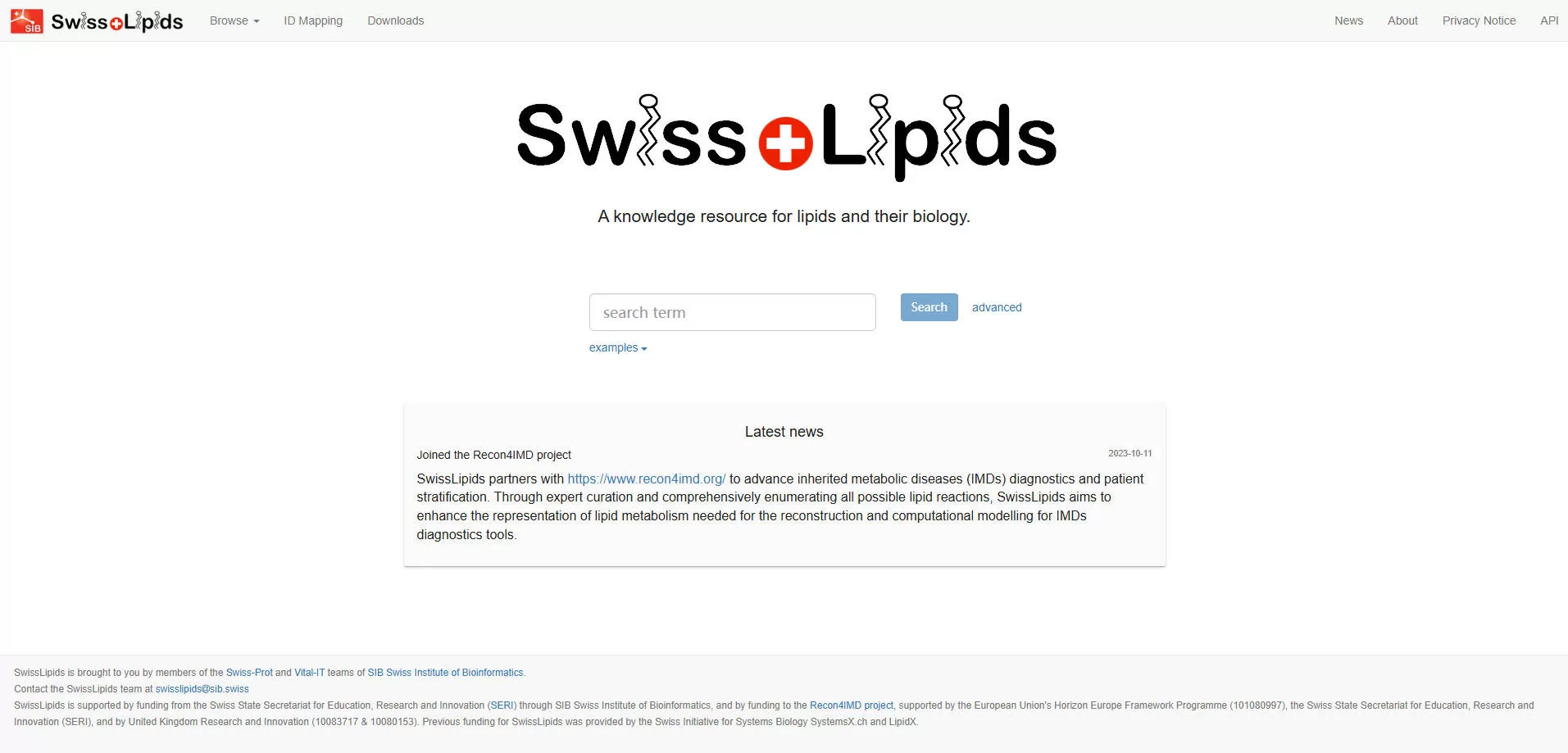
3. Metabolomics Workbench
-
Overview: A public repository for metabolomics and lipidomics data, it hosts datasets from studies like ST003157 (mouse immunometabolism).
-
Features: Provides tools like the Sterol Drawing Tool for generating lipid structures and supports data sharing.
-
Best For: Researchers looking for real-world datasets or open-access resources.
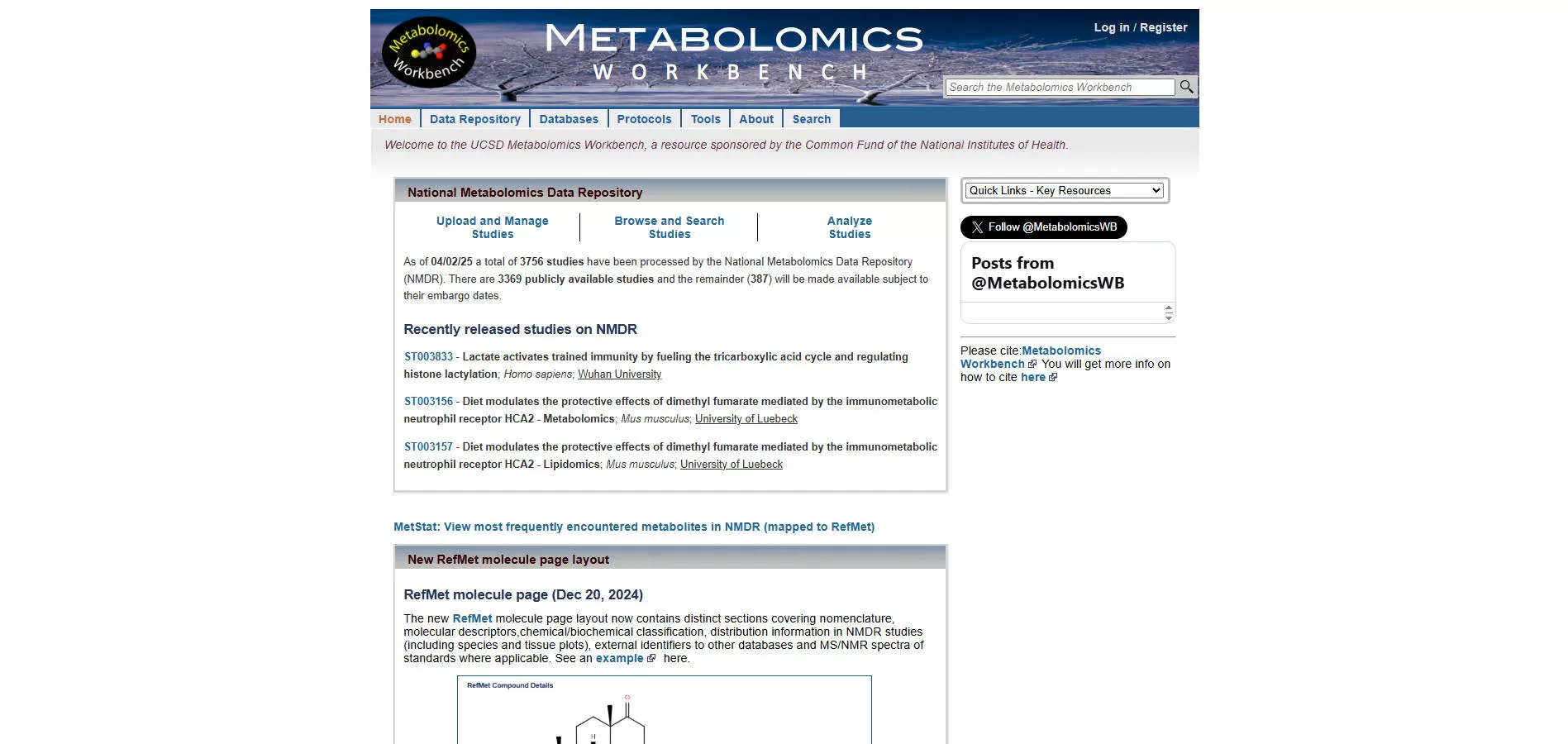
4. LipidomeDB
-
Overview: Developed by the Fiehn Lab, this database offers a data calculation environment for direct infusion-electrospray-triple quadrupole MS experiments.
-
Features: Streamlines lipid quantification and is tailored for specific experimental setups.
-
Best For: Labs using targeted lipidomics workflows.
These databases differ in focus: LIPID MAPS excels in breadth, SwissLipids in annotation, and Metabolomics Workbench in data sharing. Beginners can start with LIPID MAPS’ user-friendly portal, while experts might combine multiple databases for cross-referencing.
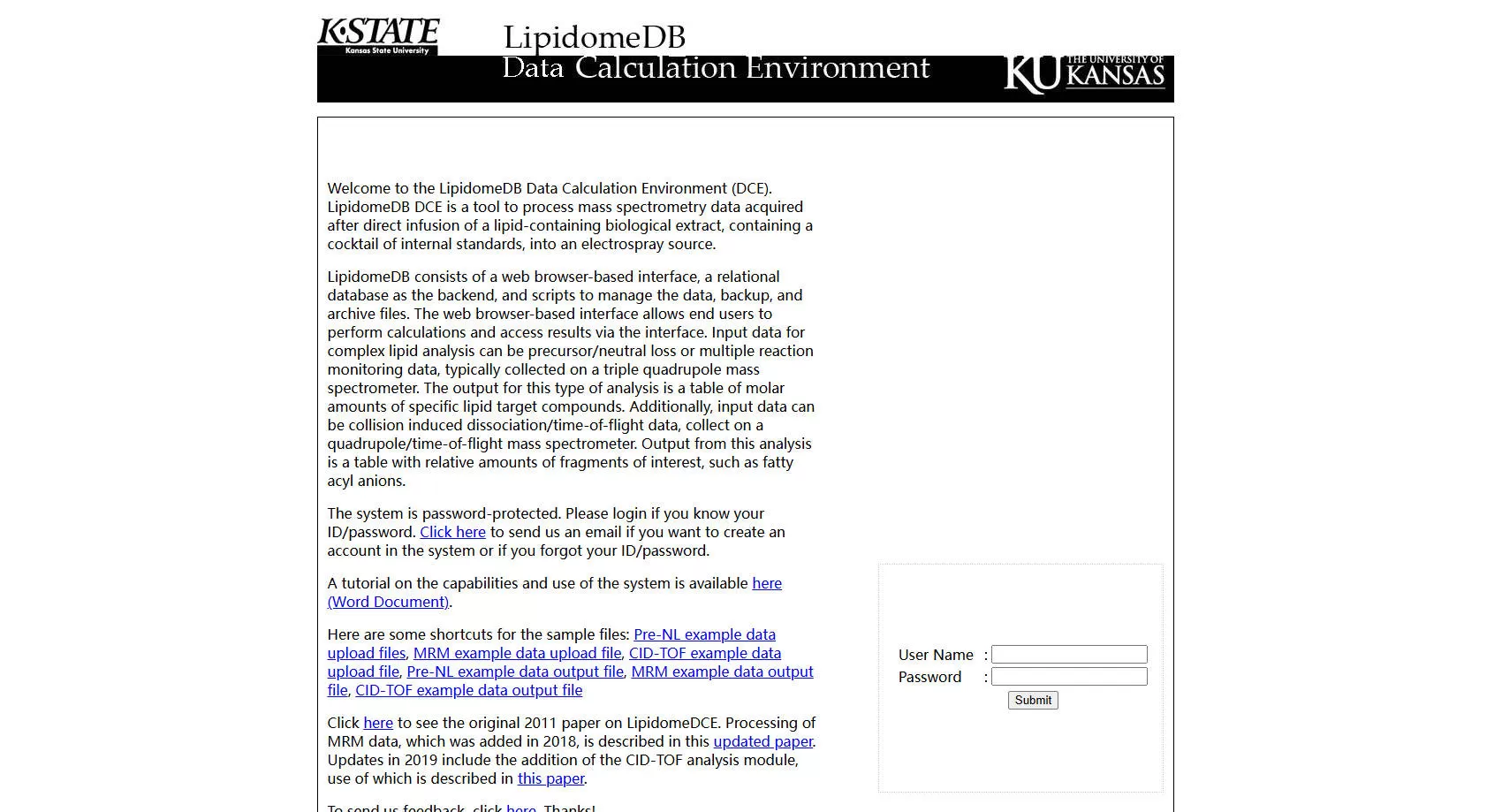
Common Lipidomics Software
Software tools process raw lipidomics data, enabling identification, quantification, and visualization. They vary in complexity, compatibility with instruments, and analytical depth. Here’s a rundown of popular options:
1. LipidFinder
-
Overview: Designed for LC-MS data, LipidFinder distinguishes lipid features from noise and impurities, outputting results compatible with LIPID MAPS categories.
-
Features: User-friendly interface, high specificity, and integration with cloud platforms.
-
Best For: Researchers analyzing complex LC-MS datasets.
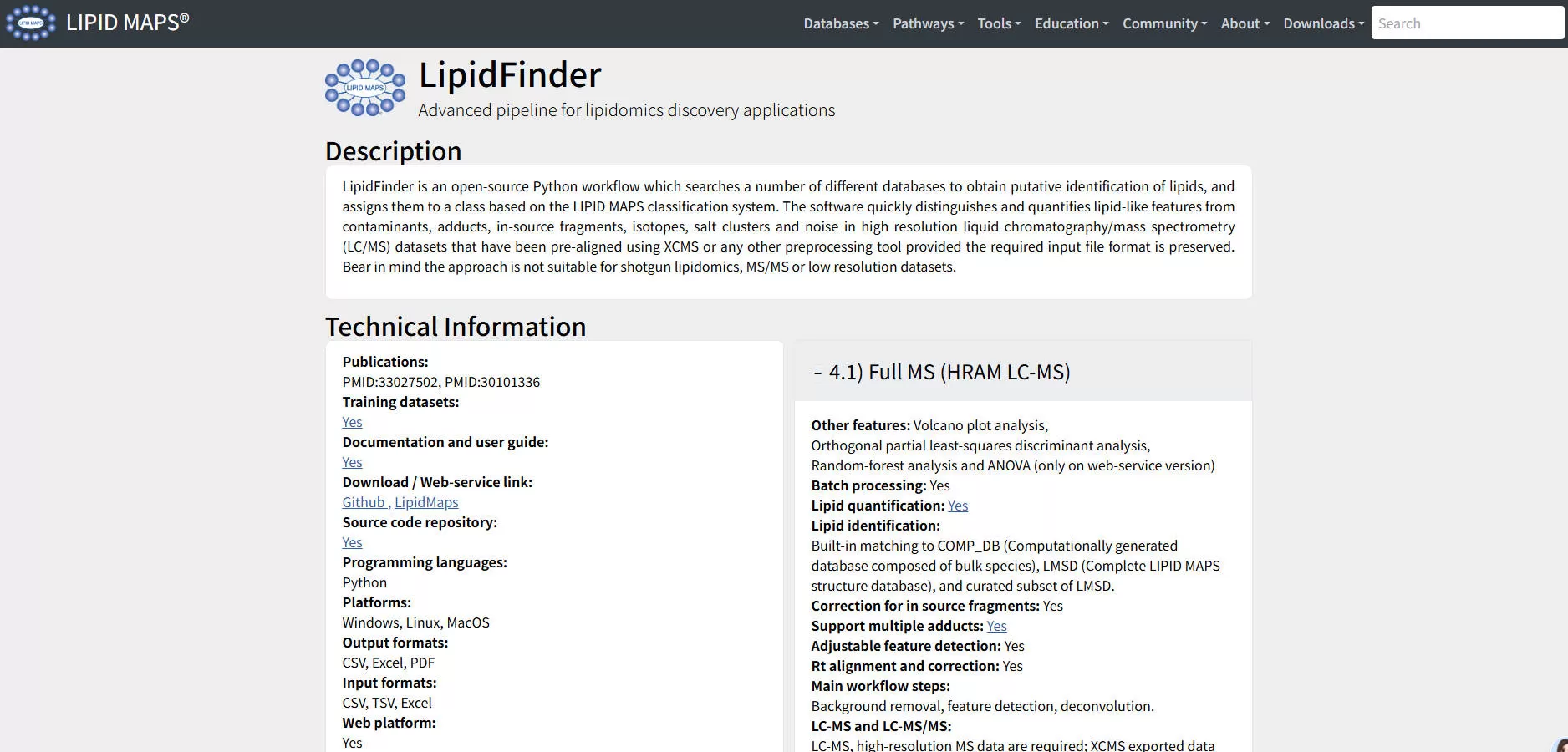
2. LipidMatch
-
Overview: A rule-based tool for lipid identification in high-resolution tandem MS experiments.
-
Features: Customizable workflows and support for multiple lipid classes.
-
Best For: High-resolution MS users needing flexibility.+
-
URL: https://innovativeomics.com/software/lipidmatch-modular-annotates-a-feature-table/
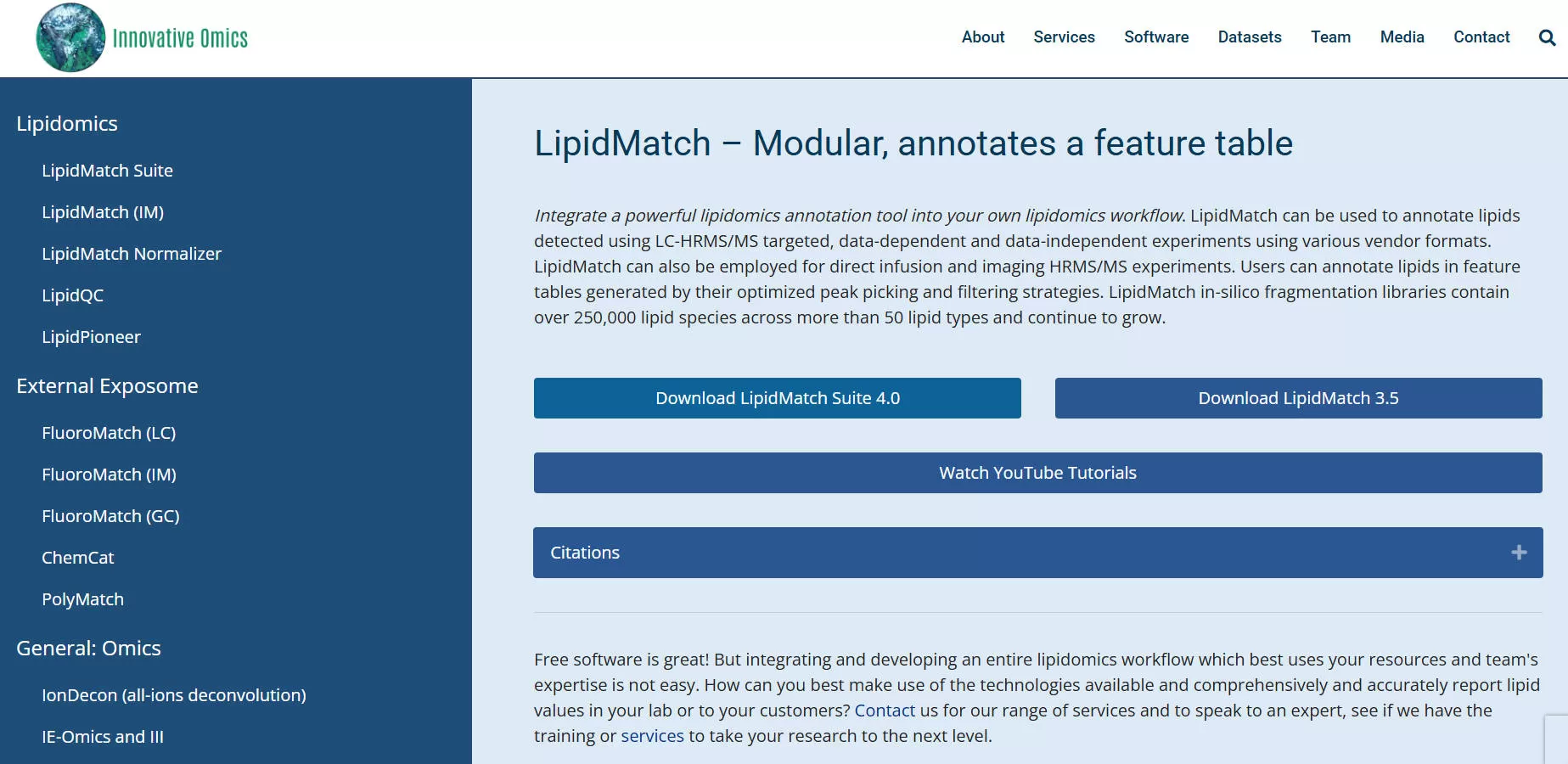
3. LipidHunter
-
Overview: Optimized for high-throughput LC-MS and shotgun lipidomics, it rapidly identifies lipids from raw spectra.
-
Features: Automated processing and detailed reporting.
-
Best For: Large-scale studies requiring speed.

4. LipidSearch
-
Overview: A commercial tool by Thermo Fisher, tailored for Orbitrap and triple quadrupole instruments.
-
Features: Automated lipid identification and quantification with a proprietary database.
-
Best For: Labs with Thermo equipment and a budget for premium software.
-
URL: https://www.thermofisher.com/order/catalog/product/OPTON-30880
5. BioPAN
-
Overview: A pathway analysis tool that predicts gene activity changes from lipidomics data.
-
Features: Integrates with LIPID MAPS and offers biological context.
-
Best For: Researchers studying lipid metabolism pathways.

6. LipidLama, Greazy, and Lipid Calculator
-
Overview: These tools automate specific tasks—LipidLama and Greazy for analysis, and Lipid Calculator (from LIPID MAPS) for computing monoisotopic masses.
-
Features: Lightweight and task-specific.
-
Best For: Quick calculations or niche workflows.
For beginners, LipidFinder’s intuitive design is a great entry point. Experts might prefer LipidSearch for its instrument-specific optimization or BioPAN for pathway insights.
How to Choose the Right Tools
Selecting the right database or software depends on your research goals, data type, and resources:
-
Research Goal: Targeted lipidomics (e.g., quantifying specific lipids) suits LipidMatch or LipidSearch, while untargeted profiling benefits from LipidFinder or LipidHunter.
-
Data Type: LC-MS data pairs well with LipidFinder, while shotgun lipidomics aligns with LipidHunter.
-
Budget: Free tools like LIPID MAPS and BioPAN are cost-effective; commercial options like LipidSearch require investment.
-
Expertise: Beginners should opt for tools with tutorials (e.g., LIPID MAPS), while experts can handle complex software like LipidMatch.
A practical example: integrating LIPID MAPS with LipidFinder allows seamless data storage and analysis, as demonstrated in studies of undiagnosed diseases (Scientific Data, 2021).
Advanced Applications and Future Trends
Lipidomics tools are pivotal in applications like:
-
Disease Diagnostics: Identifying lipid biomarkers for cancer or metabolic disorders.
-
Metabolic Research: Mapping lipid pathways in obesity or diabetes.
-
Drug Development: Screening lipid-targeting compounds.
Looking ahead, artificial intelligence (AI) is transforming lipidomics. Tools like LipidSig (Nucleic Acids Research, 2021) use machine learning for data analysis, promising greater efficiency. Stay updated via LIPID MAPS webinars, academic journals, or the Lipidomics Society (lipidomicssociety.org).
Conclusion
Lipidomics databases like LIPID MAPS, SwissLipids, and Metabolomics Workbench, alongside software like LipidFinder and LipidMatch, empower researchers to unlock the secrets of lipids. Whether you’re new to the field or a seasoned scientist, these tools cater to diverse needs. As the field evolves, AI integration and expanded databases will further enhance their utility.
For companies offering bioassay services, leveraging these tools can elevate your capabilities. MetwareBio, a leader in lipidomics and metabolomics solutions, provides cutting-edge services to streamline your research. With expertise in MS-based analysis and access to top-tier databases and software, MetwareBio is your partner in advancing lipidomics studies. Visit www.metwarebio.com to explore their offerings and take your research to the next level.


